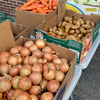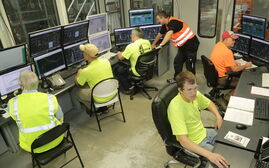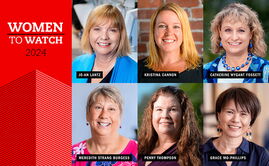Maine fisheries experts head to Japan to learn scallop practices, buy machinery
 Courtesy / Coastal Enterprises Inc.
Hugh Cowperthwaite, fisheries project director at CEI (right) with Dana Morse, extension associate at Maine Sea Grant College Program, are part of a Maine scallop fisheries delegation visiting Japan this week to learn farming practices that might translate to Maine. CEI plans to buy Japanese machinery to support the effort to expand the scallop fishery in the state.
Courtesy / Coastal Enterprises Inc.
Hugh Cowperthwaite, fisheries project director at CEI (right) with Dana Morse, extension associate at Maine Sea Grant College Program, are part of a Maine scallop fisheries delegation visiting Japan this week to learn farming practices that might translate to Maine. CEI plans to buy Japanese machinery to support the effort to expand the scallop fishery in the state.
Expanding on earlier visits to Japan, 10 aquaculture and fisheries experts from Maine are headed for Aomori Prefecture in the northern part of Japan’s main island of Honshu to learn successful techniques to grow scallops and to buy machinery to help harvest them.
“Sea scallops are among the most lucrative commercial marine species caught in the United States,” Hugh Cowperthwaite, fisheries project director at Coastal Enterprises Inc. (CEI), of Portland and the trip leader, told Mainebiz as he was preparing to leave for Aomori last Friday. “The nationwide landings value of sea scallops remained high in 2013 and was ranked fourth among all species with a total worth of $467.3 million. In 2015 the Maine wild caught scallop season witnessed prices at $12 per pound for 20-30 counts … [and up to] $16 per pound for 10 counts.”
Maine’s scallop industry was worth $5.7 million in 2015 for 452,672 meat pounds of scallops, down from 2014’s $7.6 million and 605,360 meat pounds, according to the Maine Department of Marine Resources. The per pound price remained similar however, at $12.70 in 2015 and $12.67 in 2014.
Long-standing info exchange
Cowperthwaite said Maine growers have benefited from Japanese scallop-growing techniques, and have known about Aomori’s strong scallop industry since 1994, when Maine established a sister state relationship with the Japanese prefecture .
“Japanese scallop enhancement and cultured grow-out is considered to be the most successful and oldest organized effort in the world dating back to the 1930s,” he said. “Through previous exchanges between Maine and the Aomori Prefecture (1999, 2010), Maine’s shellfish growers have become aware of machinery that will significantly reduce the manual labor currently practiced by growers to culture scallops.”
He added, “In order to grow scallops in high volume (commercial levels), you need to automate the process as much as possible to cut down on labor.” Part of the trip is for CEI to buy three machines that he said will help increase the speed and volume of harvesting and remove biofouling organisms.
“We expect to learn a lot from the Japanese about other value-added opportunities for scallops,” he said.
Japanese scallop machinery seen during a 2010 Maine delegation visit to Mutsu Kaden Tokki Co., Ltd. in Japan.
The three machines, funded by a $68,500 Maine Technology Institute grant, are a scallop drilling machine for $11,320, an automatic age pin setter for $11,900 and a scallop aquaculture cleaning machine for $45,270. The machines all are made by Mutsu Kaden Tokki Co., Ltd.
The 10 delegates are Cowperthwaite; Don Hudson, chair of the Maine Aomori Sister-State Advisory Council; Dana Morse, extension associate, Maine Sea Grant College Program; Sebastian Belle, executive director, Maine Aquaculture Association; Chris Davis, executive director, Maine Aquaculture Innovation Center; Nate Perry, Pine Point Oyster Company LLC; Gordon Connell, F/V Zephyr, commercial fisherman; Marsden Brewer, F/V Lindsay Marie, commercial fisherman and aquaculturist; Robert Brewer, commercial fisherman and aquaculturist; and Matthew Morretti, president of Wild Ocean Aquaculture LLC.
Over the Oct. 1-15 visit, Maine’s scallop experts will meet with the Aomori Prefecture Fisheries Research Institute to learn about the oceanographic effects of releasing scallop larvae as well as learn to use a spat harvester.They’ll also observe scallop and marine processing facilities and see cage cleaning at the Shimokita Product Market, plus visit various fisheries cooperative associations to get aquaculture equipment training.
EDITOR'S NOTE: This story has been updated to replace live pounds with meat pounds in the Department of Marine Resources numbers.
Read more
Warmer temperatures mean less Maine scallop fishing
Maine scallop fishermen lack moorings for boats
Maine’s most productive scallop ground shut down
Regulators set to make ruling on upcoming scallop season
Report: Maine’s farmed shellfish market is an untapped goldmine













Comments